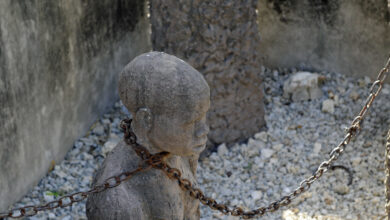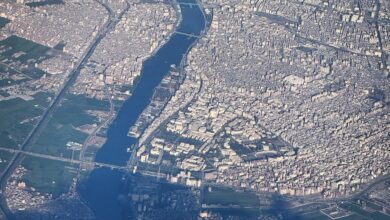Madagascar Facts, History, Culture & Travel – Africa Facts Zone
Discover the Enchanting Island of Madagascar: A Naturalist's Paradise

Behold Madagascar – the enchanting island that has captured the hearts and imaginations of travellers and nature enthusiasts alike.
This unique and diverse destination is a true gem in the Indian Ocean. It boasts a rich tapestry of culture, stunning landscapes, and an abundance of wildlife found nowhere else on Earth. Join me as we embark on a journey to uncover the secrets and wonders of this remarkable island nation.
The Biodiversity Hotspot
Madagascar is often referred to as a “biodiversity hotspot,” and for good reason. With over 90% of its wildlife found nowhere else in the world, the island is a treasure trove for nature lovers and scientists alike.
From the iconic lemurs to the bizarre-looking chameleons, Madagascar’s flora and fauna are truly one-of-a-kind.
The Lemur Kingdom
Lemurs, the adorable primates with their distinctive features, are the undisputed stars of Madagascar. With over 100 species and subspecies, these playful creatures can be found in various habitats, from the lush rainforests to the spiny deserts.
Also Read: Ethiopia Facts, History, Culture & Travel – Africa Facts Zone
Witnessing a troop of ring-tailed lemurs dancing in the sun or a fluffy mouse lemur peering at you from a tree hollow is an experience that will stay with you forever.
The Chameleon Craze
Madagascar is also home to a staggering diversity of chameleons, with over 200 species found on the island. These fascinating reptiles come in a rainbow of colours and sizes, from the tiny pygmy chameleon to the impressive Parson’s chameleon.
Watching a chameleon slowly change hues or swivel its eyes independently is a mesmerizing sight that will leave you in awe of nature’s wonders.
The Landscapes of Madagascar
Madagascar’s landscapes are as diverse as its wildlife, ranging from the lush, verdant rainforests of the east to the arid, spiny deserts of the south. The island’s unique geography and isolation have led to the formation of some truly remarkable natural wonders.
The Tsingy Formations
One of the most iconic and otherworldly landscapes in Madagascar is the Tsingy, a series of sharp limestone pinnacles that rise up from the earth like jagged teeth.
These razor-sharp formations, found in Tsingy de Bemaraha National Park, are a testament to the power of erosion and a must-see for any visitor to the island.
The Avenue of the Baobabs
Another breathtaking sight in Madagascar is the Avenue of the Baobabs, a row of towering baobab trees that line the road near Morondava.
These ancient trees, some over 800 years old, are a symbol of the island and a popular spot for photographers and nature enthusiasts alike. Watching the sun set behind the silhouettes of these majestic trees is a truly unforgettable experience.
The Culture of Madagascar
Madagascar’s culture is a fascinating blend of African, Asian, and European influences shaped by centuries of trade and migration. From the intricate wood carvings to the vibrant textiles, the island’s artisanal traditions are a testament to the creativity and skill of its people.
Also Read: Gambia Facts, History, Culture & Travel – Africa Facts Zone
The Zebu and the Famadihana
One of the most unique cultural practices in Madagascar is the Famadihana, or “turning of the bones.” This ritual, which takes place every few years, involves the exhumation of the dead, the wrapping of their remains in fresh cloth, and a joyous celebration with music and dancing.
The zebu, a type of cattle, also plays a central role in Malagasy culture, with the animals being used for food, labour, and even as a form of currency.
Conclusion
Madagascar is a truly remarkable destination that offers something for everyone, from nature lovers to cultural vultures.
Whether you’re trekking through the rainforests in search of lemurs, marvelling at the otherworldly landscapes of the Tsingy, or immersing yourself in the vibrant culture of the Malagasy people, this island nation is sure to leave a lasting impression. So why not start planning your adventure to Madagascar today?
FAQs
What is the best time to visit Madagascar?
The best time to visit Madagascar is during the dry season, which runs from May to October. This is the most comfortable time for outdoor activities and wildlife viewing.
How do I get to Madagascar?
Madagascar is accessible by air, with several international airports located throughout the island. Air Madagascar, the national airline, offers flights from major hubs in Europe and Africa.
What is the currency used in Madagascar?
The currency used in Madagascar is the Malagasy ariary (MGA). It’s a good idea to have some cash on hand, as credit card acceptance can be limited outside of major cities.
What is the best way to get around Madagascar?
The best way to get around Madagascar depends on your budget and preferences. Domestic flights are available for longer distances, while rental cars and public transportation are options for shorter trips.
What should I pack for a trip to Madagascar?
When packing for Madagascar, be sure to bring lightweight, breathable clothing, comfortable walking shoes, sun protection, and insect repellent. It’s also a good idea to pack a small first-aid kit and any necessary medications.
Are there any health precautions I should take before visiting Madagascar?
It’s recommended to consult with a healthcare professional before traveling to Madagascar. Vaccinations for hepatitis A and typhoid are often advised, and malaria prophylaxis may be necessary, depending on your itinerary.
What are some of the top attractions in Madagascar?
Some of the top attractions in Madagascar include Ranomafana National Park, Andasibe-Mantadia National Park, Isalo National Park, the Tsingy de Bemaraha National Park, and the Avenue of the Baobabs.





